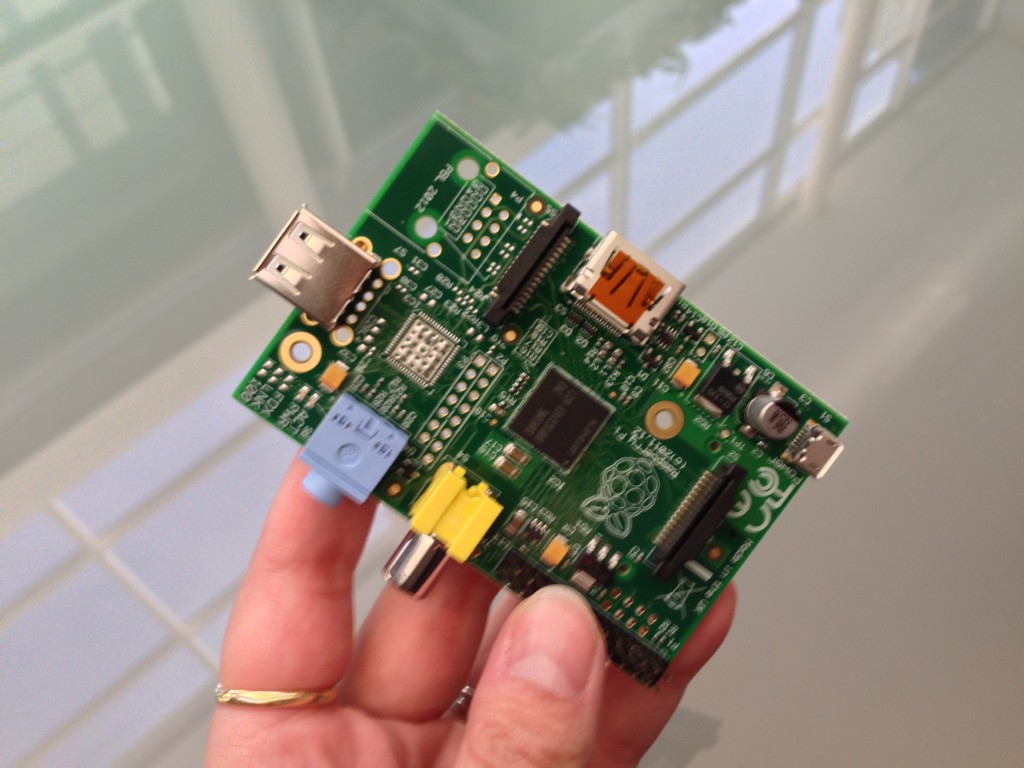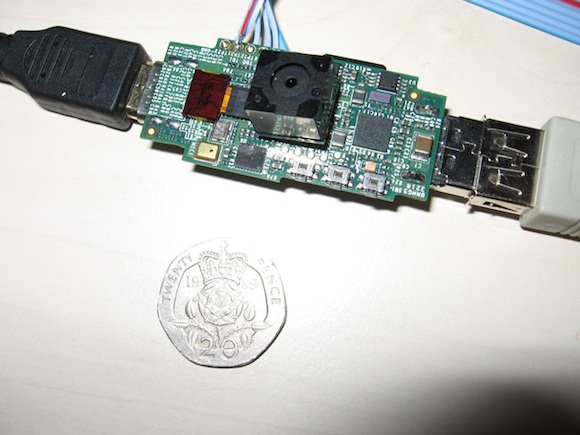The first engineering samples of the Raspberry Pi, Model A have been produced. Read about it here first: First Model A samples off the line! | Raspberry Pi.
As you can tell from the picture above and from the Foundation’s announcement, the Model A is, essentially, the same as the Model B with only four main differences:
- 256mb memory (instead of the B’s 512mb)
- 1 USB port (instead of the B’s 2)
- No ethernet port (instead of… you get the idea)
- Lower power consumption (rumours say “about half”, but no official figures have been released yet)
Many have speculated as to whether it’s even worth having two board models, especially given how successful the B has been.
The question is, essentially: why bother bringing out a board that has less functionality than the first one? Well, I think they’ve already won that argument – the model A is for people who want to run the Pi a) headless and b) with a smaller power consumption. There’s also the benefit of having a much lower vertical footprint – without the second USB and ethernet ports, it must’ve taken around 50mm off the height. Very useful.
My take, however, is that the Foundation hasn’t gone far enough! Given that the Model A is expected to be used for embedded and low-power projects, they could, and in my opinion should, have removed more components. For example, take your typical embedded project – does it really need a built-in HDMI port? Does it really need a composite video port? Does it need an audio out? My thoughts are that it definitely doesn’t need both video outputs. If the idea was to minimise the 3 dimensional footprint of the device, and to make it cheaper, then surely just the HDMI, with it’s smaller surface area and flush mounting, would have been enough? As for the audio port, I’m in two minds. On the one hand, you have the nice feature of being able to give audio feedback, on the other you have the size of the jack and the cost of the component. Of course, the HDMI socket provides sound anyway (I think…) so I’d go on the side of it not really being needed.
I’m very surprised at how long it has taken the Model A to be produced. After all, if you look at the board, it’s effectively the model B with the ethernet port not applied and a different USB package bolted on. Given that it has 256mb, I think we can safely work out how long the model A has been in gestation for. So, why the delay? In fact, that is a question that could generate an entire series of articles. But I digress. I think my general feeling was: is that it?
Speaking of the memory… The Foundation is producing the model A, rather than their manufacturing partners. Apparently this is because they “ended up owning” a bunch of memory units. Now, I wonder what memory units they might be… Could they be surplus from the now-defunct 256mb model B run? I can’t see how they can be anything else. This does rather beg the question as to whether there will be a 512mb version, despite assurances that there won’t be. My feeling is that demand for the model A will be far lower than the model B leading to a discontinuation of the model A line within a year. This is just my opinion, of course, and nothing to do with the quality of the product.
In an ideal world, I would have liked to have seen a board similar to the original prototype Raspberry Pi:
This had a tiny form factor and was therefore much more interesting to those of us interested in embedded projects. I think, though, the Foundation have made their decision. The only suggestion I really have is: consider leaving off, say, the composite and audio sockets. It would make the board positively slimline and would make it more unique in terms of a product. Perhaps the sockets could be sold individually so that, if you need an audio out, you just have to solder it on.
Either way, I’m going to stick with my model Bs for now – buying the same board with less functionality doesn’t make much sense to me. I can guarantee, though, that it will find favour among more serious developers, but I have this suspicion that the first thing those people will do is to desolder the bits they don’t need.
This is all my opinion, of course. If you disagree with me, or have anything to add, you know where the comments box is!


